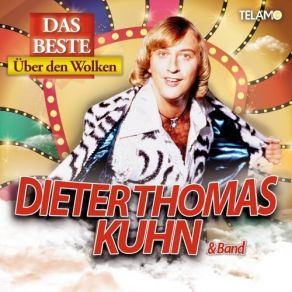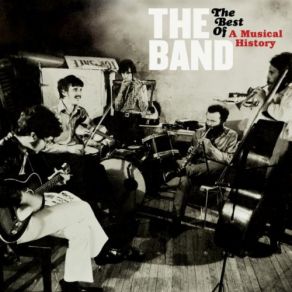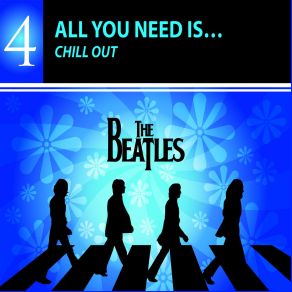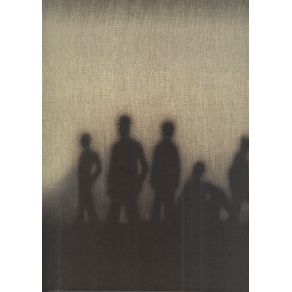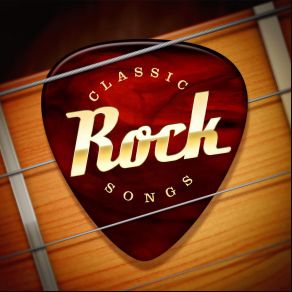The Band
Wikimp3 information about the music of The Band. On our website we have 70 albums and 70 collections of artist The Band. You can find useful information and download songs of this artist. We also know that The Band represents Rock genres.
Biography
[Edit]For roughly half a decade, from 1968 through 1975, the Band was one of the most popular and influential rock groups in the world, their music embraced by critics (and, to a somewhat lesser degree, the public) as seriously as the music of the Beatles and the Rolling Stones. Their albums were analyzed and reviewed as intensely as any records by their one-time employer and sometime mentor Bob Dylan. Although the Band retired from touring after The Last Waltz and disbanded several years later, their legacy thrived for decades, perpetuated by the bandmates' respective solo careers as well as the enduring strength of the Band's catalog.
The group's history dates back to 1958, just about the time that the formative Beatles gave up skiffle for rock & roll. Ronnie Hawkins, an Arkansas-born rock & roller who aspired to a real career, assembled a backing band that included his fellow Arkansan Levon Helm, who played drums (as well as credible guitar) and had led his own band, the Jungle Bush Beaters. The new outfit, Ronnie Hawkins & the Hawks, began recording during the spring of 1958 and gigged throughout the American south; they also played shows in Ontario, Canada, where the money was better than in their native south. When pianist Willard Jones left the lineup one year later, Hawkins began looking at some of the local music talent in Toronto in late 1959. He approached a musician named Scott Cushnie about joining the Hawks on keyboards. Cushnie was already playing in a band with Robbie Robertson, however, and would only join Hawkins if the latter musician could come along.
After some resistance from Hawkins, Robertson entered the lineup on bass, replacing a departing Jimmy Evans. Additional lineup switches took place over the next few years, with Robbie Robertson shifting to rhythm guitar behind Fred Carter's (and, briefly, Roy Buchanan's) lead playing. Rick Danko (born December 9, 1943) came in on bass in 1961, followed by Richard Manuel (born April 3, 1944) on piano and backing vocals. Around that same time, Garth Hudson (born August 2, 1937), a classically trained musician who could read music, became the last piece of the initial puzzle as organ player.
From 1959 through 1963, Ronnie Hawkins & the Hawks were one of the hottest rock & roll bands on the circuit, a special honor during a time in which rock & roll was supposedly dead. Hawkins himself was practically Toronto's answer to Elvis Presley, and he remained true to the music even as Presley himself softened and broadened his sound. The mix of personalities within the group meshed well, better than they did with Hawkins, who, unbeknownst to him, was soon the odd man out in his own group. As new members Danko, Manuel, and Hudson came aboard — all Canadian, and replacing Hawkins' fellow southerners — Hawkins lost control of the group, to some extent, as they began working together more closely.
Finally, the Hawks parted company with Ronnie Hawkins during the summer of 1963, the singer's at times overbearing personality and ego getting the better of the relationship. The Hawks decided to stay together with their oldest member, Levon Helm, out in front, variously renaming themselves Levon & the Hawks and the Canadian Squires and cutting records under both names. A hook-up with a young John Hammond, Jr. for a series of recording sessions in New York led to the group's being introduced to Bob Dylan, who was then preparing to pump up his sound in concert. Robertson and Helm played behind Dylan at his Forest Hills concert in New York in 1965 (a bootleg tape of which survives, and can be heard), and he ultimately signed up the entire group.
The hook-up with Dylan changed the Hawks, but it wasn't always an easy collaboration. In their five years backing Ronnie Hawkins, the group had played R&B-based rock & roll, heavily influenced by the sound of Chess Records in Chicago and Sun Records in Memphis. Additionally, they'd learned to play tightly and precisely and were accustomed to performing in front of audiences that were interested primarily in having a good time and dancing. Now Dylan had them playing electric adaptations of folk music, with lots of strumming and lacking the kind of edge they were accustomed to putting on their work. His sound was traceable to the music of Big Bill Broonzy and Josh White, while they'd spent years playing the music of Jerry Lee Lewis, Chuck Berry, and Bo Diddley. As it happens, all of those influences are related, but not directly, and not in ways that were obvious to the players in 1964.
Ironically, in the spring of 1965, the group had just missed their chance at what could have been a legendary meeting on record with a musician they did understand. They'd met Arkansas-based blues legend Sonny Boy Williamson II, and jammed with the singer/blues harpist one day, hoping to cut some records with him. They hadn't realized it at the time, but Williamson was a dying man — by the time the Hawks were ready to return and try to cut some records with him, he had passed on.
Another problem for the group about working with Dylan concerned his audience. The Hawks had played in front of a lot of different audiences in the previous four years, but almost all of them were people primarily interested in enjoying themselves and having a good time. Dylan, however, was playing for crowds that seemed ready to reject him over principle. The Hawks weren't accustomed to confronting the kinds of passions that drove the folk audience, any more than they were initially prepared for the freewheeling nature of Dylan's performances — he liked to make changes in the way he did songs on the spot, and the group was often hard put to keep up with him, at least at first, although the experience did make them a more flexible ensemble on-stage.
Eventually the group did get together with Dylan as his backup band on his 1966 tour, although Levon Helm left soon after the tour began at the end of 1965. The group ultimately fell under the management orbit of Dylan's own manager, Albert Grossman, who persuaded the four core members (sans Helm) to join Dylan in Woodstock, NY, working on the sessions that ultimately became the Basement Tapes in their various configurations, none of which would be heard officially for almost a decade. (Indeed, up to this time, only a single song, "Just Like Tom Thumb's Blues," done live from the tour just ended, on a 45 B-side, had surfaced representing the group playing with Dylan).
Finally, a recording contract for the group — rechristened the Band — was secured by Grossman from Capitol Records. Levon Helm returned the fold, and the result was Music from Big Pink, an indirect outgrowth of the Basement Tapes. This album, enigmatically named and packaged, sounded like nothing else being done by anybody in music when it was released in July of 1968. It was as though psychedelia, and the so-called British Invasion, had never happened; the group played and sang like five distinct individuals working toward the same goal, not mixing together smoothly. There was a collective sound to "the band," but it made up five distinct individual voices and instruments mixing folk, blues, gospel, R&B, classical, and rock & roll.
The press latched on to the album before the public did, but over the next year, the Band became one of the most talked about phenomenon in rock music and Music from Big Pink acquired a mystique and significance akin to such albums as Beggars Banquet. The group and album ran counter to the so-called counterculture, and took a little getting used to, if only for their lack of a smooth, easily categorizable sound. Their music was steeped in Americana and historical and mythic American imagery, despite the fact that all of the members except Helm came from Canada (which, in fact, may have helped them appreciate the culture they were dealing with, as outsiders). Robertson, Manuel, and Danko all wrote, and everyone but Robertson and Hudson sang; their vocals didn't mesh sweetly but simply flowed together in an informal manner. Classical organ flourishes meshed with a big (yet lean), raw rock & roll sound and the whole was so far removed from the self-indulgent virtuosity and political and cultural posturing going on around them that the Band seemed to be operating in a different reality, to different rules.
During this same period, the group's past association with Bob Dylan — whose name at the time had an almost mystical resonance with audiences — was mentioned in the rock press and also put right in the faces of listeners through a new phenomenon. Only a single track from the group's 1966 tour with Dylan had ever surfaced, and that was an out-of-print B-side to an old single. But in 1969, the first widely distributed bootleg LP, The Great White Wonder, featuring the then-unreleased Basement Tapes, started turning up on college campuses and record collectors' outlets. The quality was limited, the labels were blank, and there was no "promotion" as such of this patently illegal release, but it got around to hundreds of thousands of listeners and only heightened the mystique surrounding the Band.
Music from Big Pink, which featured a painting by Bob Dylan on its cover, began selling — slowly at first and then better — and the group played a few select shows. A second album, simply titled The Band, was every bit as good as the first. Dominated by Robertson's writing, it was released in September of 1969, and with it, the group's reputation exploded; moreover, they began their climb out of the shadow of Bob Dylan with songwriting of their own that was every bit a match for anything he was releasing at the time. A pair of songs, "Up on Cripple Creek" and "The Night They Drove Ol' Dixie Down," captured the public imagination, the former getting them onto The Ed Sullivan Show in an appearance that's fascinating to watch on the official Ed Sullivan video release; the host comes out to embrace and congratulate them, obviously thrilled after the psychedelic and hard rock acts that he usually booked, to see a group whose words and music he understood. Meanwhile, "The Night They Drove Ol' Dixie Down" became a popular radio track and yielded a hit cover version in the guise of an unaccountably corrupted rendition by Joan Baez (in which, for reasons that only Baez may be able to explain, Robert E. Lee is transformed into a steamboat) that made the Top Five.
Following the release of the second album, things changed somewhat within the group. Partly owing to the pressures of touring and the public's expectations of "genius," and also to the growing press fixation on Robbie Robertson at the expense of the rest of the group, the other group members remained familiar enough that their names and personalities were well-known to the public. The Band was still a great working ensemble, as represented on their brilliant third album, Stage Fright, but gradually exhaustion and personal pressures took their toll. Additionally, the huge amounts of money that the members started collecting, against hundreds of thousands and ultimately millions of record sales, led to instances of irresponsible behavior by individual members and their spouses and raised the pressure on the group to perform. The members had always engaged in a certain amount of casual drug use, mostly involving marijuana, but now they had access to more serious and expensive chemical diversions. Some private resentments also began manifesting themselves about Robertson's dominance of the songwriting (some reality of which was questioned openly in Levon Helm's autobiography years later), and the fact that the group was now constantly in the public eye didn't help.
By the time of the fourth album, Cahoots, some of the glow of experimentation and easygoing camaraderie was gone, though ironically, the album was still one of the best released in 1971. The problem for the group became fulfilling all of the commitments involved in success, including touring and writing new material to record. By the end of 1971, they'd decided to take a break, cutting a live album, Rock of Ages, that was all fans had to content themselves with in 1972. The fact that their next album, issued in 1973, was a collection of studio versions of the oldies that the group used to do on-stage, and numbers that they knew from their days as the Hawks, should have been a warning sign that not everything was well within the group. More troubling still was the fact that the renditions were so plain and flat sounding compared to the music they'd cut on every prior album; it simply wasn't up to the standard that one expected of the group and the fact that they didn't tour behind the record seemed to indicate that they were marking time with Moondog Matinee. The group did play one major show that year, at the race track at Watkins Glen, NY, before the largest audience ever assembled for a rock concert — it was a demonstration of their place in the rock pantheon that the Band was booked alongside the Grateful Dead and the Allman Brothers Band.
The year 1973 was also where they let the other shoe drop on their association with Bob Dylan, cutting the Planet Waves album with him and preparing for a huge national tour together in 1974. That tour, in retrospect, seemed more a basis for cashing in on their association with Dylan than for any new music-making of any significance. In many critics' eyes, the Band was superior to Dylan in their performances, an idea borne out on much of the live LP Before the Flood that was distilled down from the two February 14, 1974, performances. Everyone made a fortune from it, but the tour with Dylan also thrust the group right into the middle of the most decadent part of the rock world. A lot of the simplicity and directness of their music and lives succumbed to the easy availability of sex, drugs, and other diversions and the expensive lifestyles they were all starting to maintain.
By the end of 1974, the Band had expended much of the good will they'd built up from their first four albums. Another album, Northern Lights — Southern Cross released in late 1975, was a major comeback and restored some of the group's reputation as a cutting-edge ensemble, even encompassing elements of synthesizer music into its writing and production. Around this same time, Levon Helm and Garth Hudson made a belated contribution to the history of Chess Records (in light of their near-miss with Sonny Boy Williamson a decade earlier) when they worked with Muddy Waters, cutting an entire album with the blues legend at Helm's studio in Woodstock, NY. The Muddy Waters Woodstock Album, although ignored at the time by everyone but the critics, was the last great album cut by the label or by Waters at the label, and his best album in at least five years.
It was too late to save the Band as a working ensemble, however; the members were all involved in their own interests and lives and the group stopped touring. The inevitable best-of album in 1976, ahead of what proved to be their final tour, marked the unofficial end of the original lineup's history. One last new album, Islands, fulfilled the group's contract and had some fine moments, but they never toured behind it and it was clear to one and all that the Band was finished as a going concern. The group marked the end of their days as an active unit with the release of the film (and accompanying soundtrack LP set) The Last Waltz, directed by Martin Scorsese, of their farewell concert, which was an all-star performing affair pulling together the talents of Ronnie Hawkins, Muddy Waters, Eric Clapton, Neil Young, Van Morrison, and a dozen other luminaries drawn from the ranks of old friends, admirers, and idols of theirs. Robertson and Helm pursued musical and film careers, while Danko tried to start a solo career of his own.
Capitol Records kept repackaging their music on vinyl with an Anthology collection and a second best-of LP, as well as a pair of CD recompilations, To Kingdom Come and Across the Great Divide, in the '90s. As it turned out the members, apart from Robertson, weren't quite as ready or willing to close the book on the group, in part because they saw no reason to and also because several of them proved unable to sustain profitable solo careers (Robertson, having written most of the songs, had a steady income from the publishing as well as the record sales). The other members of the group reunited at various times — in 1983, four members of the Band, with Robertson replaced by Earl Cate of the Cate Brothers on guitar, reunited for a tour that yielded a full-length concert video and a healthy audience response. The death of Richard Manuel in 1986 cast a dark pall on any future reunions, of which there were several — Robertson issued his first solo album a year later, which included a tribute to Manuel ("Fallen Angel").
This was as close as the guitarist would get to a Band reunion, however, which became a bone of contention among onlookers and the members. Robertson publicly questioned what the meaning of The Last Waltz had been and would never participate. And as the group's major songwriter and principal guitarist, he was their most famous member, but he almost never sang significant vocal parts on their recordings (indeed, it is said that one reason their set from Woodstock was never issued was because his mic was live and his voice too prominent). Other guitarists could build on his work well enough, and the rest of the group had made significant contributions to virtually every song they ever did, so the reunions made sense. In 1993, the Band released Jericho, their first new album in 16 years, which received surprisingly good reviews. High on the Hog followed in 1996 and two years later, they celebrated their 30th anniversary with Jubilation. The death of Rick Danko in his sleep at his home in Woodstock on December 10, 1999, the day after his 56th birthday, called an end to future activities by any version of the Band, even when they received the Grammys' Lifetime Achievement Award in 2008. Levon Helm, whose solo career had accelerated during the 2000s (including the well-received Vanguard album Dirt Farmer), contracted cancer and died in April 2012.
Title: Brinca - Single
Artist: DOS., Harvy Valencia, The Band
Genre: Electronica, Dancefloor, Dance Pop
Title: Il mercante di pensieri
Artist: The Band, Stefano Ferro
Genre: Rock, Punk Rock, Songwriter/Lyricist
Title: Michigan Music Conference 2010 All State High School Orchestra & Band (Live)
Artist: The Band, John Whitwell
Genre:
Title: Clwt y Ddawns
Artist: The Band, Betws, Gŵylwyr / Gwylwyr
Genre: World Music, Instrumental, Folk, Instrumental
Title: One Night In Bangkok (F. C. F. Remix) - Single
Artist: The Band
Genre: Electronica, Dancefloor, Dance Pop
Title: Northern Lights-Southern Cross
Artist: The Band
Genre: Rock, Folk Rock, Rock & Roll, Songwriter/Lyricist, Psychedelic
Title: At The Palladium, New York 1976 (Hd Remastered Edition)
Artist: The Band
Collections
Title: An Americana Christmas
Genre: Rock
Title: Classic Rock
Title: 80's Dance Deluxe Collection 2013
Genre: Electronica, Dancefloor, Dance Pop
Title: Best of Ibiza Lounge & Chill 2013
Genre: Electronica, Dancefloor, Dance Pop
Title: Anni 70 80 90 Dance Originals & Remixes
Genre: Electronica, Dancefloor, Dance Pop
Title: Ibiza Bar Lounge Collection
Genre: Electronica, Dancefloor, Dance Pop
Title: Broadway: The American Musical
Genre: Theatre/Soundtrack
Title: Swing (Songs That Won the War)
Genre: Jazz
Title: Nashville Legends Live, Vol. 1 - 1964
Genre: Country
Title: Handel's Messiah Rocks
Genre: Gospel, Christian Rock
Title: Top 80's Dance Collection, Vol. 2
Genre: Electronica, Dancefloor, Dance Pop
Title: 100 Hits: The Best of 2013
Genre: Dancefloor, Dance Pop
Title: Gyal Season Riddim
Title: An Irish Holiday
Genre:
Title: Rock and Roll Hall of Fame, Vol. 2: 1992-1994 (Live)
Genre: Rock
Title: Born in Usa
Genre: Electronica, Dancefloor, Dance Pop
Title: A Night At Ronnie's Vol. 1
Genre: Jazz
Title: Arsch Huh - Die Chronologie
Genre: Pop
Title: Faron Young Radio Shows, Show 6
Genre: Country
Title: Total Dance Hits, Vol. 5
Genre: Electronica, Dancefloor, Dance Pop
Title: 40 Love Dance Collection
Genre: Dancefloor, Pop, Dance Pop
Title: 25 Love Hits Collection, Vol. 1
Genre: Electronica, Dancefloor, Dance Pop
Title: Swedish Jazz Vol. 3 - Mid '50s - Early '60s
Genre: Jazz
Title: Voice & Vision
Genre: World Music, Folk
Title: Les petits mouchoirs (Bande originale du film)
Genre: Pop, Theatre/Soundtrack
Title: Milano Marittima Lounge Deluxe
Genre: Electronica, Dancefloor, Dance Pop
Title: Večerní máj, byl lásky čas / Vecerni maj, byl lasky cas
Genre: Pop
Title: The Allies: A Celebration
Genre: Songwriter/Lyricist
Title: Jim MacLeod's Hogmanay Party from Blair Castle
Genre: World Music
Title: Best of Scottish Marches and Hymns
Genre: World Music
Title: Musket, Fife & Drum
Genre: World Music
Title: Rule Britannia
Genre: World Music
Title: The Best of Scotland
Genre: World Music
Title: Basel Tattoo 2014 (Live)
Genre: World Music
Title: Lieder für den Herbst / Lieder fur den Herbst
Genre: World Music
Title: Wir gratulieren
Genre:
Title: Summer Melodies
Genre: Electronica, Jazz
Title: Playdagroove! Miami Most Played (Club Edition)
Genre: Electronica, Dancefloor, Dance Pop
Title: Greek Marches
Genre: World Music
Title: Nashville - The Early String Bands, Vol. 2
Genre: Country
Title: Songs for My Sweet Darling
Genre: Pop
Title: Faron Young Radio Shows, Show 7
Genre: Country
Title: Faron Young Radio Shows, Show 5
Genre: Country
Title: Ifi Palasa - Tongan Brass
Genre: World Music
Title: Tonga - Sounds of Change
Genre: World Music
Title: Die 75 besten Deutschen Schlager der 1980er Jahre
Genre: World Music
Title: Edinburgh Military Tattoo 2000 (Live)
Genre: World Music
Title: The Best 80's Disco Mix
Genre: World Music
Title: Die Wunderbaren 60er Folge 2
Genre: World Music
Title: Instrumental World Hits - Vol. 4
Genre: Alternative
Title: Rare Country Classics, Vol.8
Title: Silvester Party
Genre: World Music
Title: Verdammt... ich lieb' dich
Genre: World Music
Featuring albums
Title: Wanted! The Outlaws
Artist: Waylon Jennings, Willie Nelson, Jessi Colter, Tompall Glaser
Genre: Country, Outlaw Country
Title: The Best of Doug Sahm's Atlantic Sessions
Artist: Doug Sahm
Genre: Rock, Blues Rock, Rock & Roll, Country
Title: Pop-Up Running, Vol. 1 (90 Min. Non-Stop Workout Mix @ 132BPM)
Artist: Yes! Fitness Music
Genre: Pop
Title: Late Night Tales: Midlake
Artist: Midlake
Genre: Electronica, Rock, Folk Rock, Progressive Rock, World Music, Country, Alternative, Songwriter/Lyricist, Psychedelic, Contemporary Folk
Title: Missfits, Jetzt Mit Noch Mehr Männer / Missfits, Jetzt Mit Noch Mehr Manner
Artist: Missfits
Genre: Humor
Title: Cinema Classics 2006
Artist: Kym Amps, The Royal Philharmonic Orchestra, Marina Mescheriakova
Genre:
Title: SparkPeople: Motivation Mix (60 Minute Non-Stop Workout Mix)
Artist: Yes! Fitness Music
Genre:
Title: Auf das Leben! / To Life! (Original Motion Picture Soundtrack)
Artist: Martin Stock
Genre: World Music, Theatre/Soundtrack
Title: I'm Not There (Music From The Motion Picture)
Artist: Original Soundtrack
Genre: Theatre/Soundtrack
Title: Bob Dylan - 30th Anniversary Concert Celebration (Deluxe Edition) [Remastered]
Artist: Various
Genre: Rock
Title: Evil Dead: Original Broadway Cast Album
Artist: Evil Dead: Original Broadway Cast Album
Genre: Theatre/Soundtrack
Title: Taking Woodstock [Original Motion Picture Soundtrack]
Artist: Various Artists
Genre: Theatre/Soundtrack
Title: Sparkpeople: Motivation Mix 1 - 60 Minute Non-Stop Workout Mix
Artist: Yes! Workout Music
Genre: Electronica, Dancefloor



